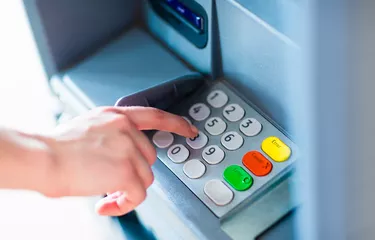
There is no cash withdrawal limit and you can withdrawal as much money as you need from your bank account at any time, but there are some regulations in place for amounts over $10,000. For larger withdrawals, you must prove your identity and show that the cash is for a legal purpose. It might take a few days to receive the money if you are withdrawing a very large sum.
Bank Secrecy Act
Video of the Day
The FDIC initiated the Currency and Foreign Transaction Act in 1970 so U.S. financial institutions could help the government combat money laundering. Also referred to as the Bank Secrecy Act, these regulations require the institutions to report any customer activity that appears suspicious or different from regular behavior. For instance, your bank must make a report to the IRS if you withdraw more than $10,000, especially if you haven't withdrawn such a large amount before. This law also extends to the purchase of traveler's checks, the exchanging of one currency for another and large cash deposits.
Video of the Day
Making a Withdrawal
Fill out a withdrawal slip at your bank and present it to a teller, as you would for regular transactions. Provide identification, such as your driver's license, state ID card or passport, as well as your Social Security number. Be prepared to answer questions about your withdrawal, such as what you plan to do with it. The teller is required to ask these questions to complete IRS Form 8300: Report of Cash Payments Over $10,000 Received in a Trade or Business, which banks must file for cash withdrawals over $10,000.
If you refuse to respond or give evasive answers, the teller must file a suspicious activity report. Additionally, your bank might not have the large sum of money on hand that you've requested, and may ask you to return in up to seven days to collect it.
Beware of Illegal Structuring
Trying to prevent the bank from reporting a withdrawal of $10,000 by withdrawing a slightly smaller amount, like $9,985, is called structuring. It is also considered structuring if you withdraw the sum in smaller amounts over several days, or withdraw it in smaller amounts from different branches. This behavior is a violation of federal law and could cause the government to seize the money indefinitely, or until the situation has been satisfactorily explained.
Take Proper Safety Precautions
Practice safety when carrying a large amount of money. Bigger notes make a smaller pile of cash. For instance, $10,000 can fit into your into your purse or laptop case in $100 bills.
Separate it from the money you need for regular transactions to avoid mistakenly pulling it out in public. Put the wallet out of easy reach for pickpockets, like in your inner coat pocket, and if you do carry it in a purse, secure it and hold it close. When you leave the bank, look confident and don't clutch the area where you have placed the money. Because there is safety in numbers, have someone you trust with you.
If you need to withdraw 50k cash from bank, you should consider asking for a cashier's check instead of cash. You'd have trouble hiding this large amount of money in a purse or laptop case.